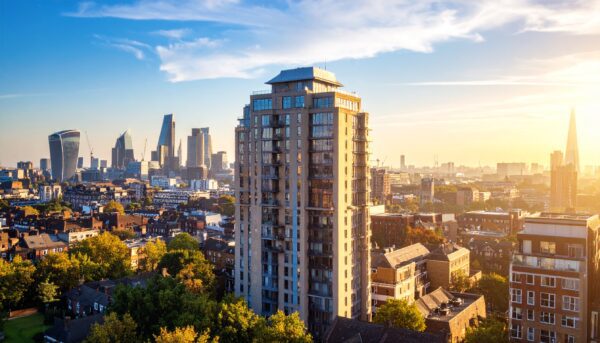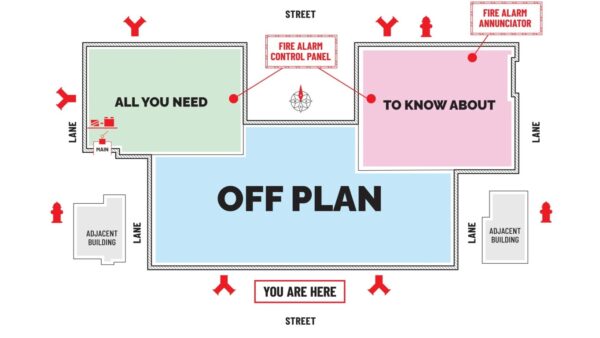Latest Posts

Looking at the King’s Speech 2023 from a Property Perspective
This week’s King’s Speech has seen the UK government outline its legislative agenda for the forthcoming year-long session of Parliament. This is primarily focused on three priorities – economic growth, societal strengthening, and public safety.
In this article, we focus on the government’s proposals that may impact on the property sector.
The Renters (Reform) Bill
The government remains committed to re-shaping the landlord/tenant relationship, although in an attempt to balance the landlords’ interest, the proposed abolition of the Section 21 Notice eviction procedure will be delayed until after the court system has been reformed. This will almost certainly take years to complete, effectively shelving the proposals for the foreseeable future.
The King’s Speech expressly recognises the need to also protect landlords, ensuring they benefit from reforms to enable them to regain possession of their properties when needed.
Minimum Energy Efficiency Standards
As already announced by the Prime Minister in September, the briefing notes to the King’s Speech confirm that the government will not take forward proposals to force private landlords to urgently undertake home improvements to meet a minimum Energy Performance Certificate rating of ‘C’ (having previously required this to be completed by 2025 for new tenancies and 2028 for existing tenancies).
The Leasehold and Freehold Reform Bill
The King’s Speech stated that the government will introduce a bill to i) make it cheaper and easier for leaseholders to purchase their freehold; and ii) tackle the exploitation of millions of homeowners through punitive service charges. These proposals build on those introduced by the Leasehold Reform (Ground Rents) Act 2022.
Consistent with the government’s previous communications, the main proposals are summarised below:
Ground rents and lease extensions
- Caps to be introduced on ground rents in existing leases;
- Lease extension procedure to be overhauled, making it more straightforward and cost-effective;
- Lease extension term to increase from 90 years to 990 years; and
- Removal of the current two-year ownership requirement before a leaseholder can request a lease extension.
Leaseholds
- Save for exceptional circumstances, a blanket ban on the creation of leasehold houses;
- Caps on certain landlord and managing agent fees when a leasehold property is sold;
- Increased transparency in respect of service charges; and
- Further empowerment of leaseholders to challenge freeholders over unfair practices.
Conclusion
Whilst the proposed legislative reforms promise much, it remains to be seen what can be achieved by the current government given a general election is scheduled to be held by no later than 28 January 2025.
To discuss any of the points raised in this article, please contact Daniel Blake or fill in the form below.

Building Safety Act 2022: New Regulations For Higher-Risk Buildings
As most of you will know, in August 2023 the Government laid before Parliament several regulations designed to extensively update and change various sections of the Building Safety Act (BSA) 2022 as well as other building regulations.
These changes came into force over the weekend. We have all heard plenty about the intentions behind the new regulations in wake of the Grenfell tragedy and Dame Hackitt’s subsequent report, but what does this mean for you and your business in practice? This article provides a brief overview of the changes.
What Are The New Building Safety Regulations?
The new regulations are:
- Building (Approved Inspectors etc and Review of Decisions) (England) Regulations 2023 – amend the Building (Approved Inspectors etc) Regulations 2010. The amendments mean that the Building Safety Regulator will be the only building control authority for all higher-risk buildings (HRB).
- Building (Higher-Risk Buildings Procedures) (England) Regulations 2023 – provide the detail of the building control regime for HRBs during design and construction or when building work is being done to an existing HRB.
- Building Regulations etc (Amendment) (England) Regulations 2023 – amend the Building Regulations 2010 to support the new HRBs control regime. Extensive changes include Regulation 6, which inserts a new Part 2A “Dutyholders and competence” into the BR 2010.
- The Building Safety Act 2022 (Consequential Amendments etc) Regulations – make consequential amendments to various miscellaneous statutes and orders.
Alongside the tabling of the new regulations, the Government also published its response to the consultation on changes to the building control regime under the Building Safety Act 2022 (BSA 2022) and relevant regulations.
These changes focused on HRBs and with the Government emphasising that it intended to place additional requirements on all those working on such buildings.
What Are The Changes That Came Into Force On 1 October 2023?
Part 2A of the Building Regulations etc. (Amendment) (England) Regulations 2023 introduces new dutyholder and competence requirements for practitioners and clients. These apply to all works that are subject to the Building Regulations 2010. Clients are required to plan, manage, and monitor the project to ensure full compliance with the Building Regulations 2010. Designers and contractors should only be appointed once the client is fully satisfied that they meet the competency requirements.
For their part, designers and contractors , having considered the project, must be sure that they can satisfy the competency requirements before they accept the job. Principal designers and principal contractors who have an active co-ordinating role must meet additional requirements before being appointed or accepting an appointment.
To meet the competency requirements, an individual contractor or designer must have the skills, knowledge, experience, and behaviours necessary to fulfil their duties. Entities must have the organisational capability to undertake the project.
Although most of these requirements will have already been fulfilled by the parties, the amendments require the steps be documented so a detailed audit trail exists.
The Building Regulations etc. (Amendment) (England) Regulations 2023 Also Provide For:
- Amendments concerning the process for building control approval in respect of non-Higher-Risk Building works. This replaces the current “deposit of plans”;
- A more robust definition of “commencement” (which was previously only dealt with in guidance) and provision for the automatic lapse of building control approval after three years if works have not begun; and
- For building works where the Fire Safety Order applies, the provisions concerning fire safety information have been strengthened.
The changes around HRBs set out in the Building (Higher-Risk Buildings Procedures) (England) Regulations 2023 are in line with those featured in the consultation on which the Government has recently published its responses. They include:
- At Gateway 2 (building control application stage) and Gateway 3 (completion certificate stage), full details of the compliance documentation to be submitted must be provided.
- Certain changes to approved documents must be notified to the Building Safety Regulator (BSR). Major changes to the documents will require BSR approval.
- A mandatory safety reporting procedure for major incidents.
- A requirement to maintain a golden thread of information in an electronic facility incorporating all approved documents from Gateways 1 and 2, the change control log, any mandatory occurrence reports, any notified changes in the principal designer or principal contractor and a draft Gateway 3. An additional requirement is that this data must be capable of being transferred in a format which is uncorrupted, readable, and intelligible to intended recipients.
Timescales For Implementation?
Broadly speaking, the amendments to the Building Regulations 2010 and the Approved Inspectors Regulations 2010 will not apply to building work started or where an initial notice has been given to a local authority and was accepted or treated as accepted before 1 October 2023.
There are complex transitional provisions in relation to the Higher-Risk Buildings Procedures Regulations 2023 which are beyond the scope of this article. If you have any questions, please feel free to contact me.
Wrapping Up
Many of the questions relating to the changes to the building safety regime will only become apparent as the new provisions bed in.
However, we do expect Regulators and the Courts to take a hard line on any breaches, so it is vital that your business fully grasps the changes and implements policies and procedures to ensure compliance.
To discuss any of the points raised in this article, please contact Stephanie Houston or fill in the form below.

A Buyer’s Guide to Off-Plan Property
Whether you are investing in property or buying your first home, one option that has gained popularity in recent years is buying property off-plan.
Off-plan property refers to purchasing a property before it is fully constructed. This approach has significant differences from buying a finished ‘second hand’ property.
The key points are discussed in this article to help you make an informed decision when considering purchasing off plan property.
Longer Payment Period
Developers often offer flexible payment plans, allowing buyers to spread their payments over the construction period, although the full balance will have to be paid at the completion date.
Whilst you will need to ensure payments are made on time and that they are protected against the developer becoming insolvent it allows buyers to maintain and manage their cashflow up to the point of completion.
This can make it more manageable for purchasers and reduce the immediate financial burden. You must of course be comfortable that you will have funds available come the completion date.
Choice of Specification
Off-plan buyers may have the option to customise certain aspects of the property, such as finishes, and fixtures, according to their preferences.
You may be able to negotiate this with developers and allow the required specification to be added to the legal contract. Developers will also retain the right to make minor changes to the specification.
Newer and More Energy-Efficient Properties
Off-plan properties are usually built with the latest construction technologies and materials, making them more energy-efficient and potentially leading to lower utility costs.
Investors should be able to rest easy knowing that there will be minimal repairs to be carried out to the property and building the first few years, keeping expenditure down.
New Build Warranty
For most properties bought off-plan, the developer provides the buyer with a New Build Guarantee from a recognised new build guarantee provider.
There are different types of warranty, some covering every part of the property, others only covering the structure.
You will need an experienced solicitor to guide you as to the strength and validity of the warranty and how these compare to others on the market.
The Consumer Code For Home Builders
The Consumer Code for Home Builders is a set of guidelines and standards designed to protect the rights and interests of new homebuyers.
It promotes transparency, fairness, and high standards of construction and customer service in the homebuilding industry.
Only builders and developers that are registered with a home warranty provider that has elected to participate in the Code must comply with its requirements. It is important to check whether your developer adheres to the code.
The Property and Building
The Developer will agree to build the property in accordance with all necessary planning permissions, the government building regulations, the standards required by the new build warranty provider, in a good and workmanlike manner and in accordance with the specification.
This is significantly different to a second-hand purchase where the condition of the property is not guaranteed and the principle of ‘buyer beware’ applies, with purchasers undertaking full surveys.
It is still sensible to engage a surveyor to monitor the build quality, and to undertake a snagging inspection for you at completion.
Developer Reputation
The success of your off-plan investment will heavily depend on the developer fulfilling its contractual building obligations.
Your solicitor can negotiate the contractual clauses ensuring these are market standard, however, it is important to do your research and ensure that you are comfortable with the developer you are purchasing from, rather than having to fall back on court action It is prudent to research the developer’s past projects and financial stability to gauge their reliability.
Conclusion
Buying off-plan property can be a rewarding investment strategy. Before making a decision, carefully evaluate your financial situation, conduct thorough research on the developer, and consider your long-term investment goals.
By doing so, you can make an informed choice that aligns with your objectives and risk tolerance.
As always, there are risks when purchasing any type of property. At Quastels, we are open in our approach and help clearly explain and assess any risk to purchasing off plan, to negotiate the contract, as well as providing you with practical advice
To discuss any of the points raised in this article, please contact Meera Malde or fill in the form below.